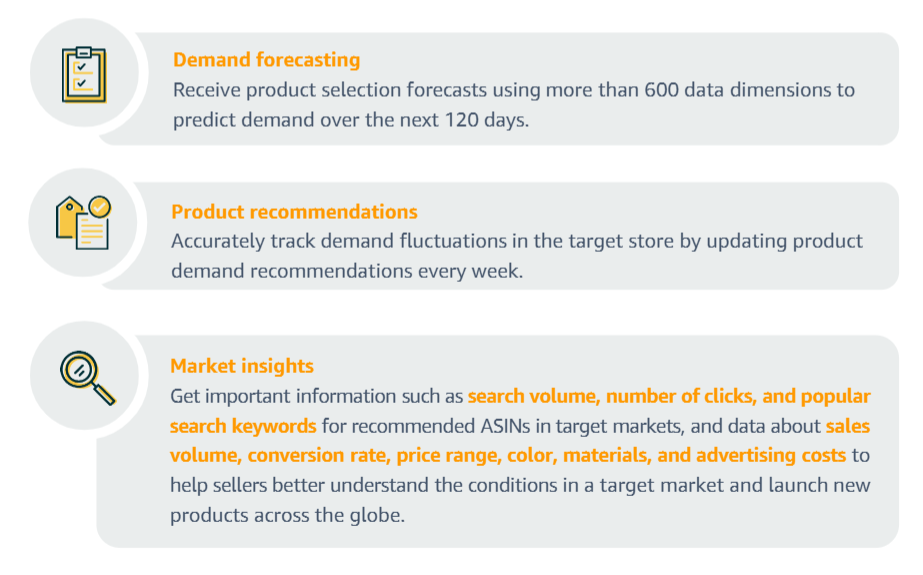Using data for market research on Amazon: Everything you need to know about Marketplace Product Guidance
As we have covered a few times now in the e-Comas blogs, data is where it’s at with selling on Amazon, which is why we’re dedicated to becoming the most data-driven eCommerce agency in the world.
We’ve seen how data can be used for streamlining your advertising and maximising revenue around event days like Black Friday.
But what about market research?
Now, thanks to Marketplace Product Guidance (MPG), sellers can use their Amazon data to find not only when customers are buying, and what ads have driven them to buy, but which products work best in which categories, and – crucially – where to sell them.

What is Marketplace Product Guidance?
MPG is a free tool on Amazon, visible on Seller Central under the Growth tab.
It helps sellers analyse how their products are performing against others in the same category, and how a product might be changed or marketed differently – and where.
There are three branches of MPG: Category Insights, Global Product Demand, and New Product Recommendations.
Category Insights
The Category Insights tool shows you detailed data on what customers are typically buying: right down to what room in the house shoppers intend the item for, and whether the item is patterned or one colour.
Available in the US, the UK, Germany and Japan, Category Insights allows you to filter your data by category, product type, store or item keyword, giving you useful information like:
- How many ASINs are under that product type
- Number of Sellers selling under that product type
- The most common price points
- Reasons why items were returned
- Search to purchase ratio
- Return ratio.
You can use Category Insights to explore the characteristics of a product, including the colours, materials and sizes, that resonate best with customers.
Global Product Demand
MPG also uses data to recommend which countries a seller should expand to – and tells you about the high-demand products, customer preferences, product categories and advertising fees in those countries to help you make a decision.
Available in the US only for now, MPG’s Global Product Demand tool selects and recommends ASINs that the Seller already has listed that are in high demand in other countries (those other countries being the UK, Germany, Spain, France, Italy and Japan – for now).
It then gives you keywords for recommended ASINs in your target markets, and data including sales volume, conversion rate, price range and advertising costs to help you launch products in those different countries.
The data weighs up 150 attributes in your target country to show you whether your product is suited to that market, so you’re more informed on what to list globally. You get a better understanding of what different markets want, and a better idea of how successful that product is going to be.
New Product Recommendations
Finally, the New Selection Recommendations tool recommends new products in the seller’s existing category based on currently available products.
It gives you a list of high-demand products that you haven’t sold in your current store (or in your new target store, if you’re expanding abroad).
Why should I use MPG?
Helping sellers to expand globally seems to be one of Amazon’s main goals here.
And that makes sense, because helping successful sellers move into new markets is a great way for Amazon to keep growing.
It’s great news for sellers who are thinking of taking the plunge and moving into new territories – and thanks to Amazon’s logistics, and maybe with a little agency help, that’s never been easier.
Even if you’re not particularly interested in world domination, MPG is fantastic for market research. It shows exactly what customers have been searching for, so you can update your product selection and your ad strategy based on what customers really want – you have more insight here than ever before.
It also allows you to forecast demand for your product over the next 120 days, using data from 600 data dimensions.
It’s another fine illustration of how data is shaping eCommerce. And how sellers who don’t use the data that’s available to them for free from Amazon will be the ones who fall behind.